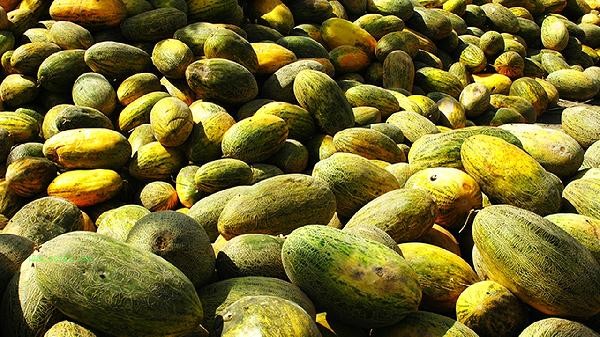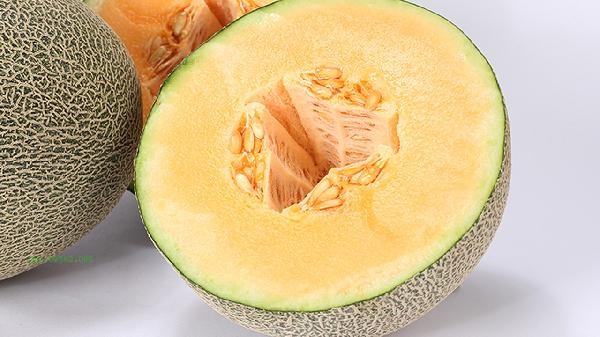The maturity of green skinned cantaloupe can be determined by observing the color of the fruit skin, pressing the firmness of the navel, smelling the aroma of the fruit stem, weighing, and checking the condition of the fruit stem.

1. Skin color
Mature green skinned cantaloupe skin will gradually turn from blue-green to light yellow or milky white, with dark brown and clear patterns in the mesh area. Immature melons have a greenish green body, with blurred or whitish mesh patterns. When some varieties mature, their skin will emit a light golden luster, especially in areas exposed to sunlight. The reduction of white frost on the surface of melon peel is also one of the signs of maturity.
2. Soft and Hard Umbilical
Gently press the navel area with your thumb, and mature cantaloupe will show moderate elasticity, with a slight rebound sensation after pressing. Hard indicates incomplete maturity, while too soft may result in overripe or rotting. Pay attention to applying gentle pressure to avoid damaging the melon body. The navel of high-quality mature melons may have a slight depression, but there is no damage or leakage.
3. Fruit Stem Aroma
Mature cantaloupe emits a rich sweet aroma at the fruit stem, similar to the scent of honey mixed with floral fragrance. Immature melon stems may have a tasteless or grassy taste, while overripe melons may have a fermented alcohol flavor. You can place the melon stem facing up and let it sit for a moment before approaching to smell it. The more obvious the aroma, the higher the maturity. When some varieties mature, the fruit stems will naturally dry up and fall off.

4. Weight Comparison
Mature melons are heavier than raw melons under the same volume, indicating sufficient accumulation of sugar and water. You can hold a melon of similar size in both hands for comparison, and those with obvious pressing sensation are usually more mature. However, attention should be paid to eliminating the false weight caused by excessive irrigation, and comprehensive judgment should be made based on other characteristics. Melons that are too light may be hollow or underdeveloped.
5. Stem state
Naturally ripe cantaloupe stems will dry up and shrink to form a circular depression, which is easy to fall off when pulled lightly. The handpicked melon stems are fresh green and thick, tightly connected to the melon body. Observing the cross-section of the fruit stem, mature melons appear dry and woody, while unripe melons have moist cross-sections with juice seeping out. It is preferable to have no mold or decay marks around the fruit stem.

When selecting Hami melons, priority should be given to individuals with clear golden skin, elastic navel, and rich fruity aroma. When stored in a cool and ventilated place, they can be kept for 3-5 days. If the flesh is bright orange yellow, the seeds are full, and the sugar crystals are obvious after cutting, it is a sign of complete maturity. Avoid purchasing melons with bruises, mold spots, or abnormally softened skin. Before consumption, it is recommended to rinse the skin with running water. Cut Hami melons stored in refrigeration should be consumed within 24 hours to ensure nutrition and taste. It can be used with yogurt, nuts and other foods to increase nutrient intake, but diabetes patients need to control the single consumption.








Comments (0)
Leave a Comment
No comments yet
Be the first to share your thoughts!